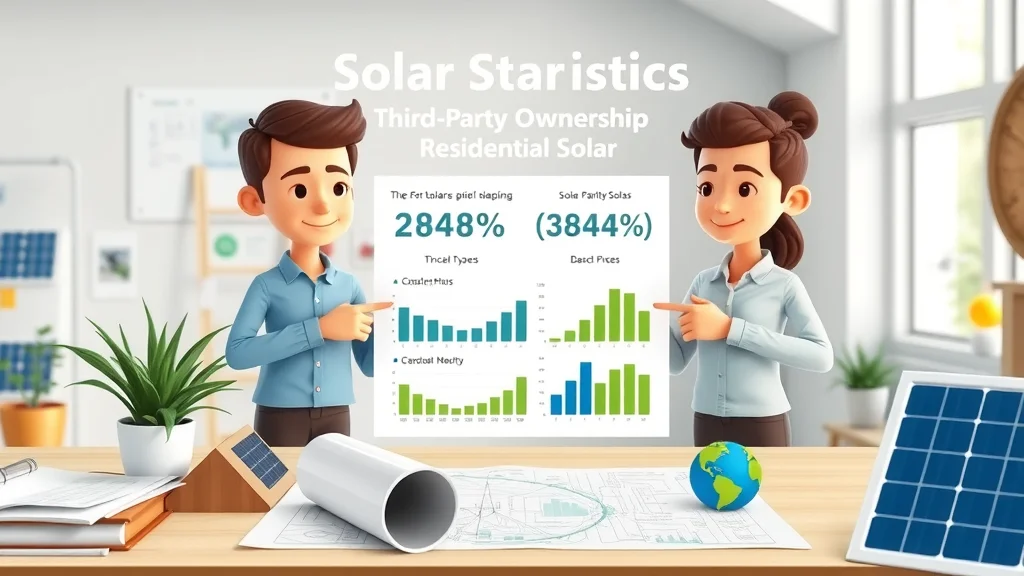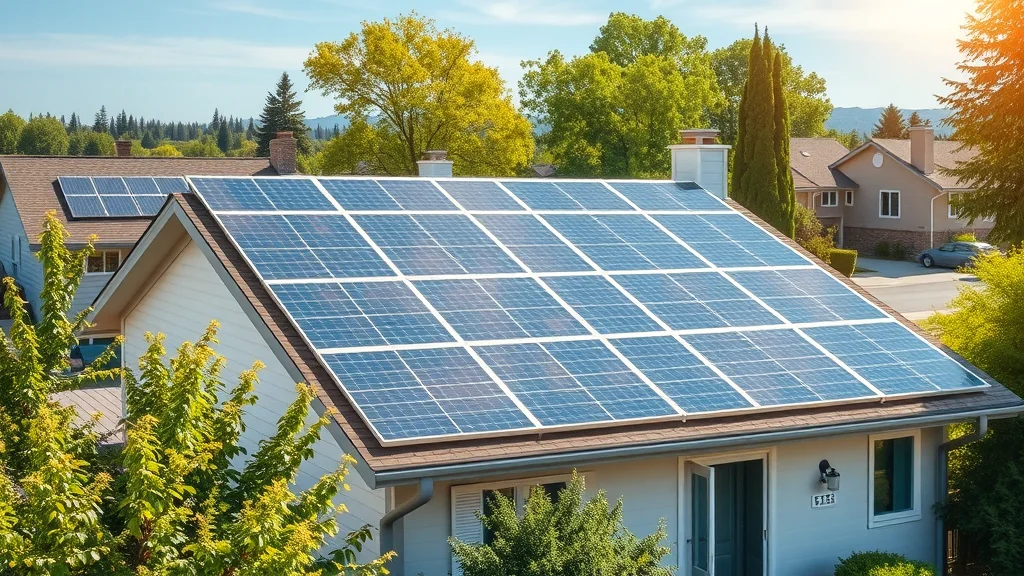Startling Statistics Reveal the Growing Impact of Third-Party Ownership: Over 30% of residential solar installations in the U.S. utilize third-party ownership models. This innovative financing removes upfront costs, unlocking solar energy access to millions. Typical agreements span 10 to 25 years, offering homeowners long-term savings and sustainable energy solutions.

Startling Facts About Third-Party Ownership Solar Guide
- Over 30% of residential solar installations in the U.S. use third-party ownership models.
- Third-Party Ownership (TPO) removes upfront costs, making solar accessible to millions.
- TPO agreements typically last between 10 to 25 years, offering long-term energy savings.
What You'll Learn
- Definition and explanation of third-party ownership solar guide
- Differences between solar lease, power purchase agreement, and other financing options
- Benefits and considerations of TPO for residential solar customers
- How TPO compares to solar loans and cash purchases
- Frequently asked questions about TPO agreements and warranties
Understanding Third-Party Ownership Solar Guide: Definition and Key Concepts
Third-Party Ownership (TPO) represents a groundbreaking financing model transforming residential solar energy adoption. Instead of homeowners purchasing and maintaining solar systems outright, a third-party—usually a solar provider or financial institution—owns, installs, and cares for the system. The homeowner pays only for the electricity produced by the solar panels.
Tony Alvarez, a solar energy expert at Powur, explains, "Third-Party Ownership allows homeowners to access solar energy without the burden of upfront costs or maintenance responsibilities, making solar more accessible than ever." This model effectively lowers the entry barriers to clean energy for families nationwide.
- Definition of Third-Party Ownership (TPO) in residential solar
- How TPO works: ownership, installation, and maintenance by a third party
- Main types of TPO: Solar Lease and Power Purchase Agreement (PPA)
- Role of the homeowner: paying for electricity generated, not owning the system
Solar Lease Explained
In a solar lease, a third-party provider installs and owns the solar system on a homeowner's property. The homeowner pays a fixed monthly lease amount for the right to use the electricity generated by the solar panels. This payment remains consistent, allowing predictable budgeting without the risks of ownership.
Maintenance and monitoring are included in the lease agreement, so homeowners can enjoy hassle-free solar energy without worrying about system upkeep. At the end of the lease term, they often have options to renew the lease, purchase the system at a discounted price, or have the provider remove the panels, offering flexibility based on their long-term plans.
- Fixed monthly lease payments for use of solar energy system
- Maintenance and monitoring included by the provider
- Options at lease end: renew, purchase at discounted price, or removal

Power Purchase Agreement (PPA) Overview
The Power Purchase Agreement (PPA) is another prevalent TPO model. Here, the third-party provider installs and maintains the solar system, but the homeowner pays based on the actual electricity the system produces—measured per kilowatt-hour. These rates are generally set below local utility prices, offering immediate financial savings.
The homeowner benefits from solar generation without owning the system or bearing maintenance responsibilities. Typical PPA contracts last 10 to 25 years, after which the homeowner may renew the agreement or purchase the solar panels if desired. This pay-as-you-go setup appeals to those seeking low risk and flexible solar access.
- Homeowner pays per kilowatt-hour for electricity generated
- Typically lower rates than utility retail prices
- Maintenance and monitoring included
- End of term options: renew or purchase system
Comparing Third-Party Ownership Solar Guide with Solar Loans and Cash Purchases
Choosing the right solar financing option depends on ownership preference, upfront costs, tax benefits, maintenance responsibility, and long-term goals. Below is a comprehensive comparison of Third-Party Ownership, Cash Purchase, and Solar Loan methods:
| Aspect | Third-Party Ownership (TPO) | Cash Purchase | Solar Loan |
|---|---|---|---|
| Ownership | Third-party owns system | Homeowner owns system outright | Homeowner owns system, repays loan |
| Upfront Costs | Minimal or none | Full system cost upfront | Little to none, loan payments spread out |
| Federal Tax Credit (ITC) | Financier claims ITC, benefits passed to homeowner | Homeowner claims ITC | Homeowner claims ITC |
| Maintenance | Provider responsible | Homeowner responsible | Homeowner responsible |
| Long-term Ownership | No ownership, fixed term 10-25 years | Full ownership, system lifespan 25+ years | Ownership after loan repayment |
Tony Alvarez of Powur notes, "Understanding the distinctions between TPO, loans, and cash purchases is crucial for homeowners to select the best solar financing option for their needs." Homeowners should assess their financial situation, energy goals, and preferences before deciding.
Key Benefits of Third-Party Ownership Solar Guide for Residential Customers
Third-Party Ownership has revolutionized solar energy adoption by transforming it into an accessible, low-risk opportunity. Here are the primary advantages for residential customers:
- Low or no upfront costs enabling easier access to solar energy
- Immediate savings on electricity bills without capital investment
- Maintenance and monitoring included, reducing homeowner responsibilities
- Performance guarantees and warranties provided by TPO providers
- Flexible payment options: fixed lease or pay-as-you-go PPAs
- No ownership responsibilities or risks for the homeowner
- Supports renewable energy growth and sustainability goals
- Potential increase in property value with solar installation

Common Misconceptions and Important Considerations in Third-Party Ownership Solar Guide
While TPO offers many advantages, some misunderstandings and contract details need careful attention to avoid surprises:
- TPO does not mean homeowners lose all benefits; savings and convenience are substantial.
- Powur Care extended warranty is not applicable with TPO due to existing provider warranties, avoiding redundant costs.
- Escalator clauses in leases or PPAs may increase payments incrementally over time.
- Transferability of agreements when moving varies by provider and contract terms.
- Homeowners should review contract terms carefully before signing, ensuring alignment with personal and financial goals.

Frequently Asked Questions About Third-Party Ownership Solar Guide
- What happens if the solar system produces more electricity than used? Excess electricity usually feeds back to the grid under net metering policies, sometimes earning credits or compensation.
- Who is responsible for maintenance and repairs under TPO? The third-party provider owns and maintains the system, relieving the homeowner of this burden.
- Can the agreement be transferred if the homeowner moves? Many TPO agreements allow transfer to a new owner or early termination with payment of the contract balance.
- What warranty protections are included with TPO? System warranties are provided by the financier covering defects and performance during the agreement term.
- How does TPO affect home resale value? TPO can enhance resale value due to predictable electricity costs and clean energy benefits, with transfer options easing sale processes.
- Is the battery checklist required for TPO projects? It is recommended but not mandatory; optional documentation may still assist in the sale process.
Expert Insights and Best Practices for Navigating Third-Party Ownership Solar Guide
Tony Alvarez advises, "Homeowners should carefully evaluate their energy needs, financial goals, and contract terms to choose the TPO option that best fits their lifestyle and budget."
- Consult with trusted solar companies to understand local TPO options
- Review all contract details including payment terms and escalators
- Consider long-term plans such as homeownership duration and resale
- Leverage expert advice to maximize benefits and avoid pitfalls

Conclusion: Why Third-Party Ownership Solar Guide is a Smart Choice for Many Homeowners
- TPO offers an accessible, low-risk path to solar energy adoption
- It removes financial and maintenance barriers for homeowners
- Supports environmental sustainability and energy independence
- Provides flexible options tailored to diverse homeowner needs
Tony Alvarez concludes, "Third-Party Ownership is transforming residential solar by making clean energy affordable and hassle-free for millions of homeowners."
People Also Ask About Third-Party Ownership Solar Guide
- What is third-party ownership in solar energy?
- How does a solar lease differ from a power purchase agreement?
- Can I transfer my solar lease if I sell my home?
- Who maintains the solar panels under a TPO agreement?
- Are there any upfront costs with third-party ownership?
- How do tax credits work with TPO solar financing?

Key Takeaways from the Third-Party Ownership Solar Guide
- Third-Party Ownership allows solar access without upfront investment or ownership responsibilities
- Solar leases and PPAs are the primary TPO models with distinct payment structures
- TPO providers handle maintenance, warranties, and system performance
- Homeowners benefit from immediate savings and flexible payment options
- Understanding contract terms and transferability is essential before committing
🌞 Ready to Learn How Solar Can Work for You?
- Discover how Third-Party Ownership and other solar financing solutions can save you money while helping the planet.
- Visit Tony Alvarez’s Solar Education Page to explore your options and start your journey toward clean, affordable energy today.
 Add Row
Add Row  Add
Add 



Write A Comment